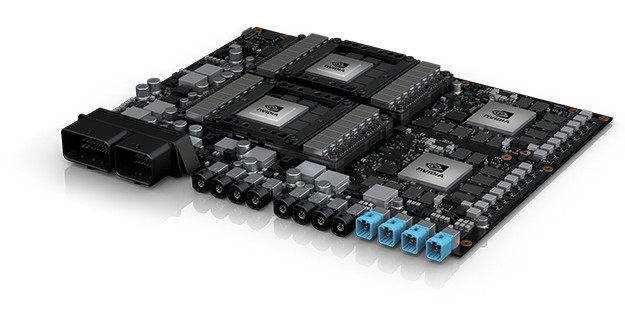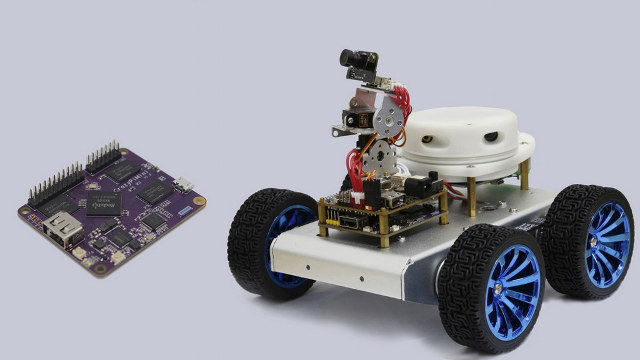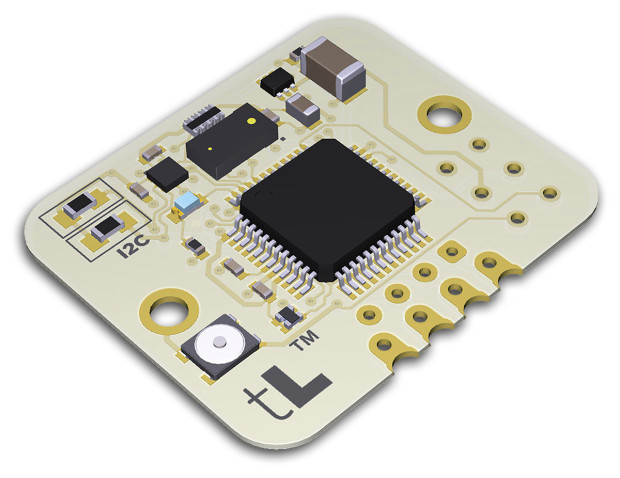Many companies are now involved in the quest to develop self-driving cars, and getting there step by step with 6 levels of autonomous driving defined based on info from Wikipedia: Level 0 – Automated system issues warnings but has no vehicle control. Level 1 (”hands on”) – Driver and automated system shares control over the vehicle. Examples include Adaptive Cruise Control (ACC), Parking Assistance, and Lane Keeping Assistance (LKA) Type II. Level 2 (”hands off”) – The automated system takes full control of the vehicle (accelerating, braking, and steering), but the driver is still expected to monitor the driving, and be prepared to immediately intervene at any time. You’ll actually have your hands on the steering wheel, just in case… Level 3 (”eyes off”) – The driver can safely turn their attention away from the driving tasks, e.g. the driver can text or watch a movie. The system may ask […]
CrazyPi Board Runs Ubuntu and ROS on Rockchip RK3128 SoC for Robotics & IoT Projects (Crowdfunding)
CrazyPi is a maker board powered by Rockchip RK3128 quad core Cortex A7 processor that can take various magnetically connected modules such as LIDAR, gimbal, 4G LTE, etc.., and runs both Ubuntu and ROS (Robot Operating System) for DIY robotics & IoT projects. CrazyPi main board specifications: SoC – Rockchip RK3128 quad core Cortex A7 processor @ 1.2 GHz with ARM Mali GPU MCU – ARM Cortex-M3 @ 72 MHz System Memory – 1GB DDR3L @ 1066 MHz Storage – 16GB eMMC flash pre-loaded with Ubuntu and ROS Connectivity – 802.11 a/b/g/n WiFi @ 150 Mbps, Bluetooth 4.0 USB – 1x USB 2.0 host port Expansion Headers – Two headers with a total of 36-pin exposing 1x HDMI, 1x speaker, 1x microphone, 3x PWM, 1x I2C, 1x UART, 1x SPDIF, 1x SPI, 1x USB Power Supply – 5V via micro USB port ? Dimensions – Smaller than credit card The […]
TinyLIDAR is a $15 LIDAR MCU Board based on STMicro VL53L0X Time-of-Flight Ranging Sensor (Crowdfunding)
LIDAR (Light Detection and Ranging) technology is used in autonomous car, drones, and some smartphones, in order to get an object position just like RADAR systems, but instead of using radio frequencies, it relies on infrared signals. High speed, long range LIDAR systems can cost several hundred dollars, but if you’d like to experiment with the technology, or your project would work just fine with 60 Hz scanning and a 2 meter range, tinyLIDAR could be a fun board to play with using Arduino compatible boards. TinyLIDAR specifications and features: LIDAR Sensor ST VL53L0X Time-of-Flight (ToF) ranging sensor 940nm laser VCSEL Up to 2 meters range Up to 60 Hz sampling rate even with Arduino UNO board Up to 3% accuracy with mm precision MCU – Unnamed dedicated 32-bit MCU (likely STM32) used to abstract the ST PAL API into simple I2C commands Host Interface – 4-pin I2C header; re-configurable […]





